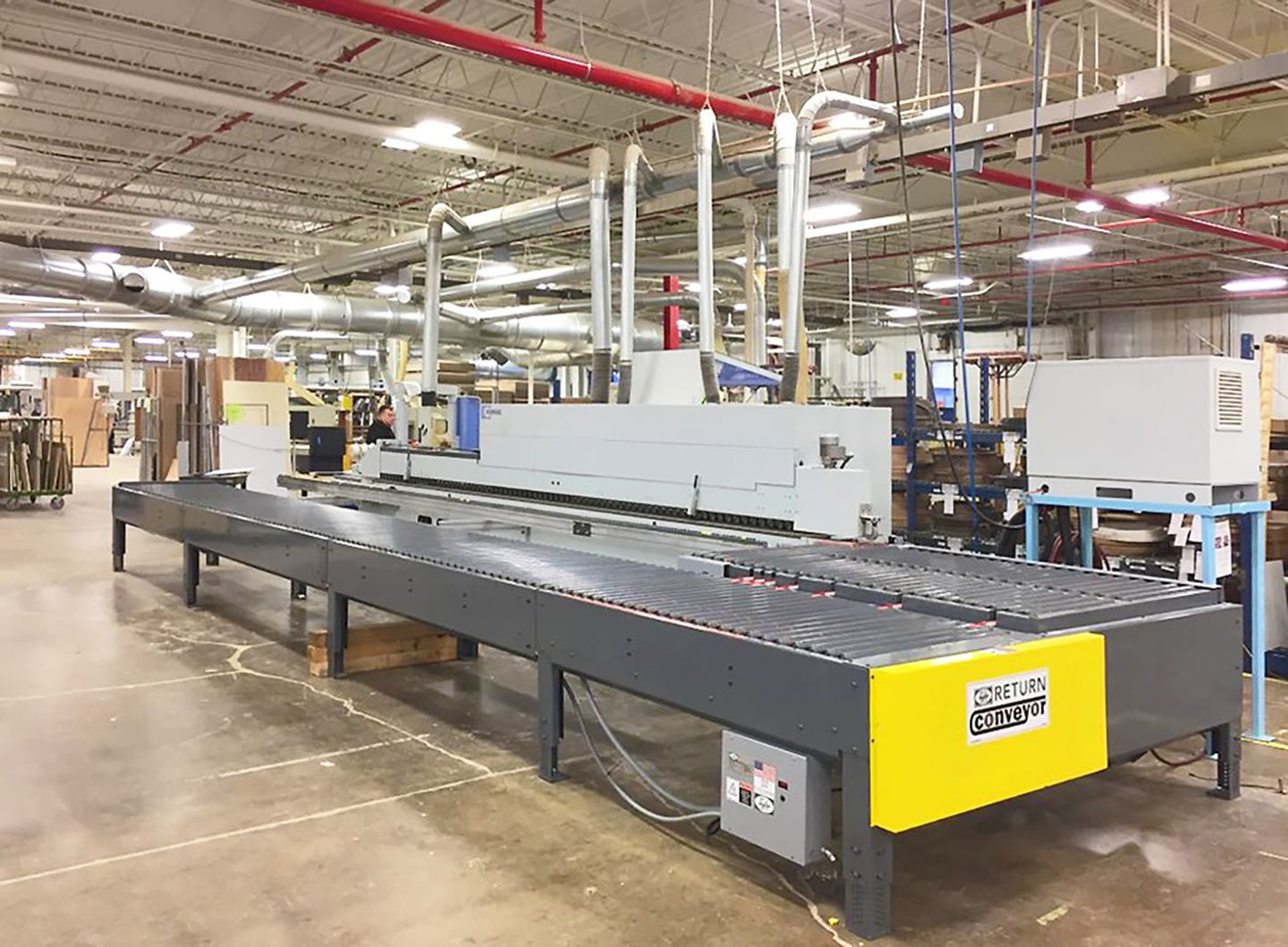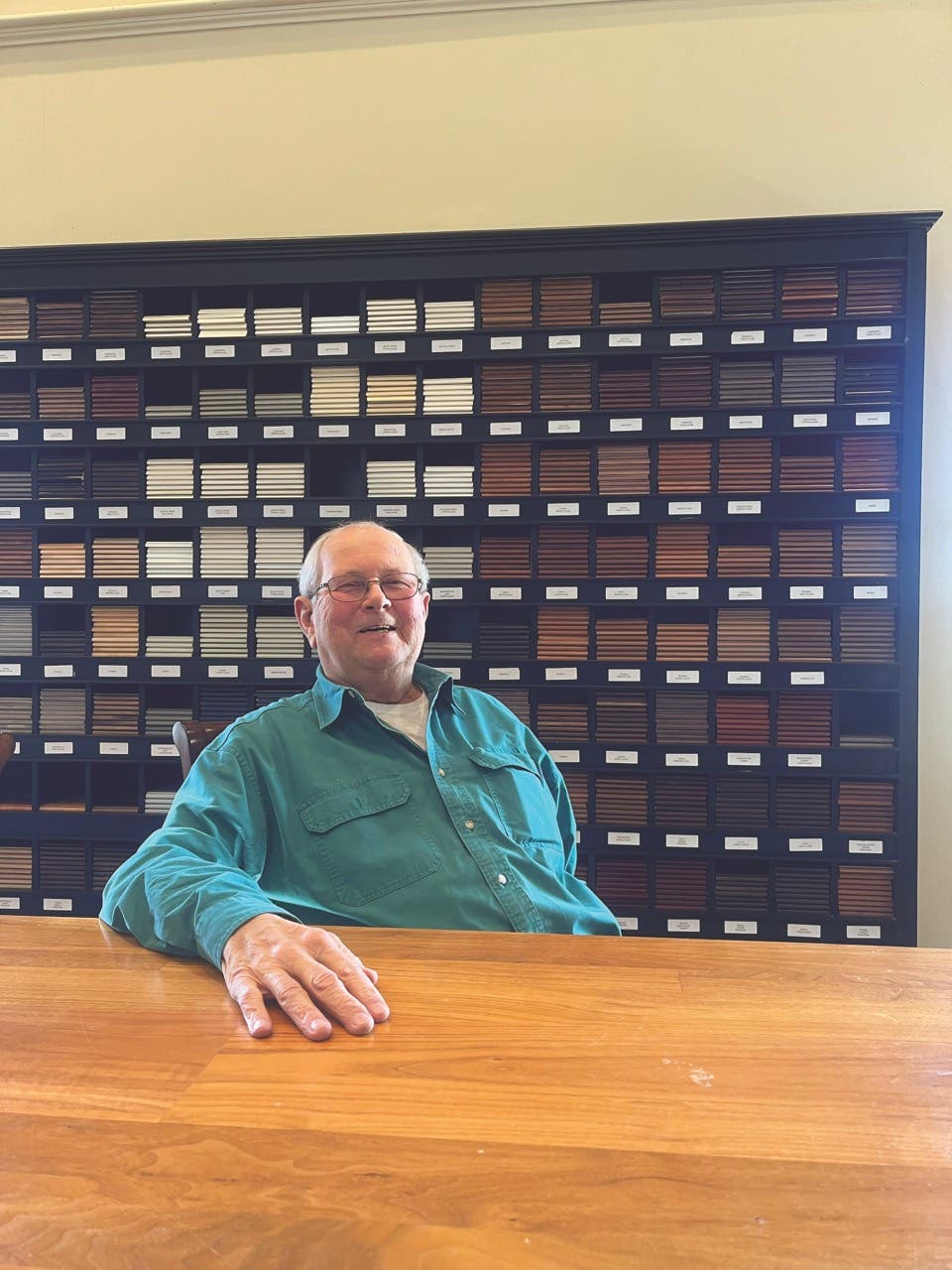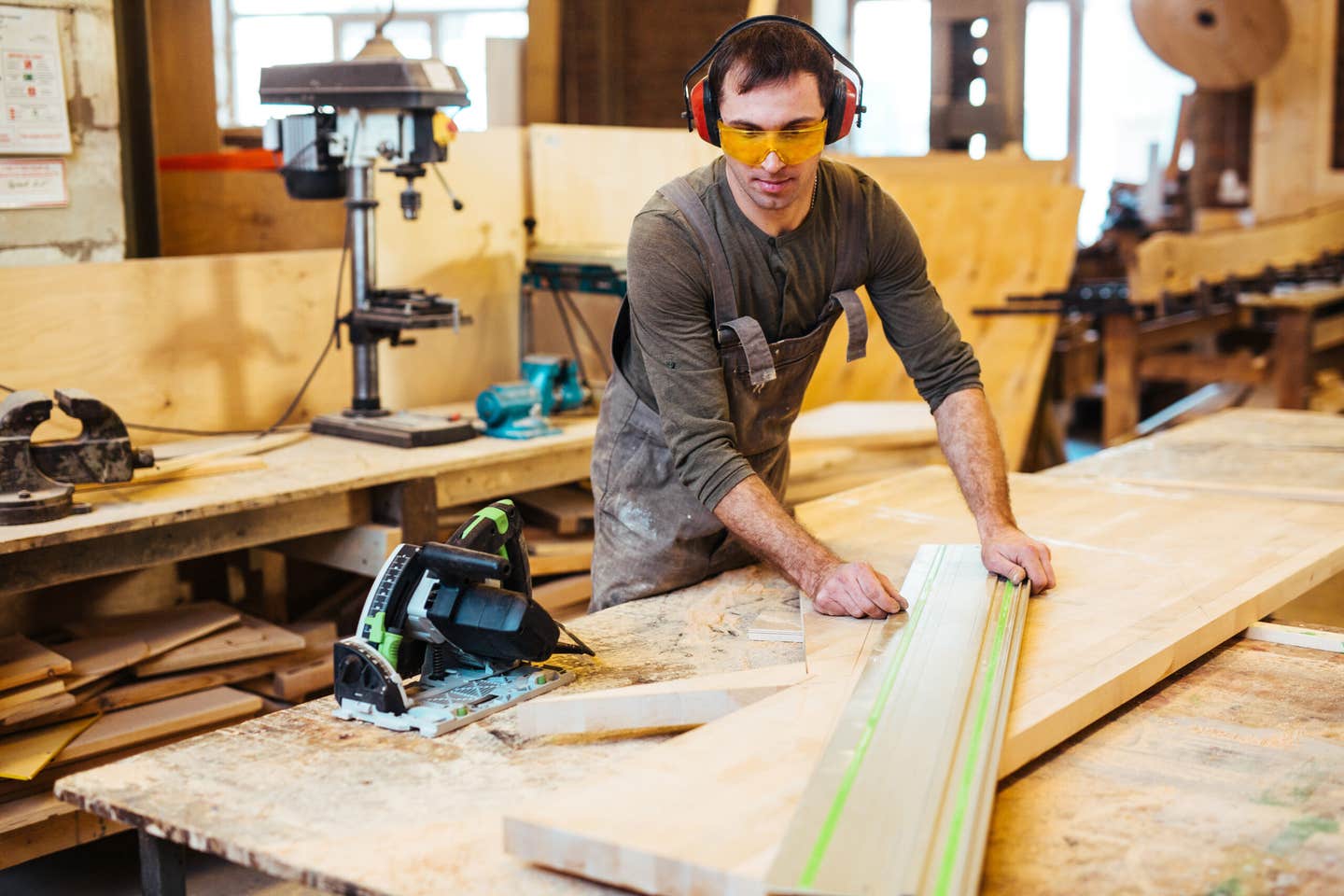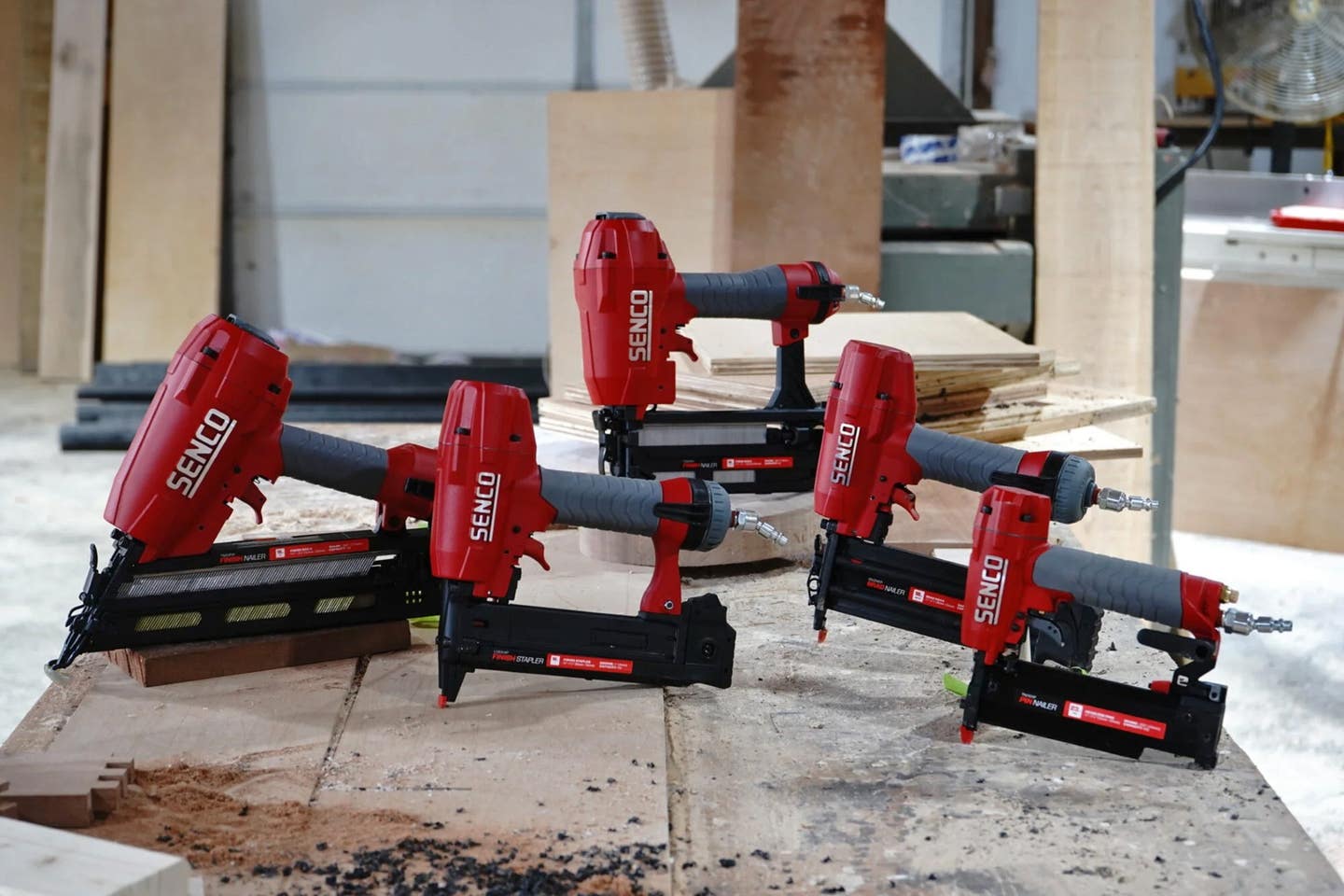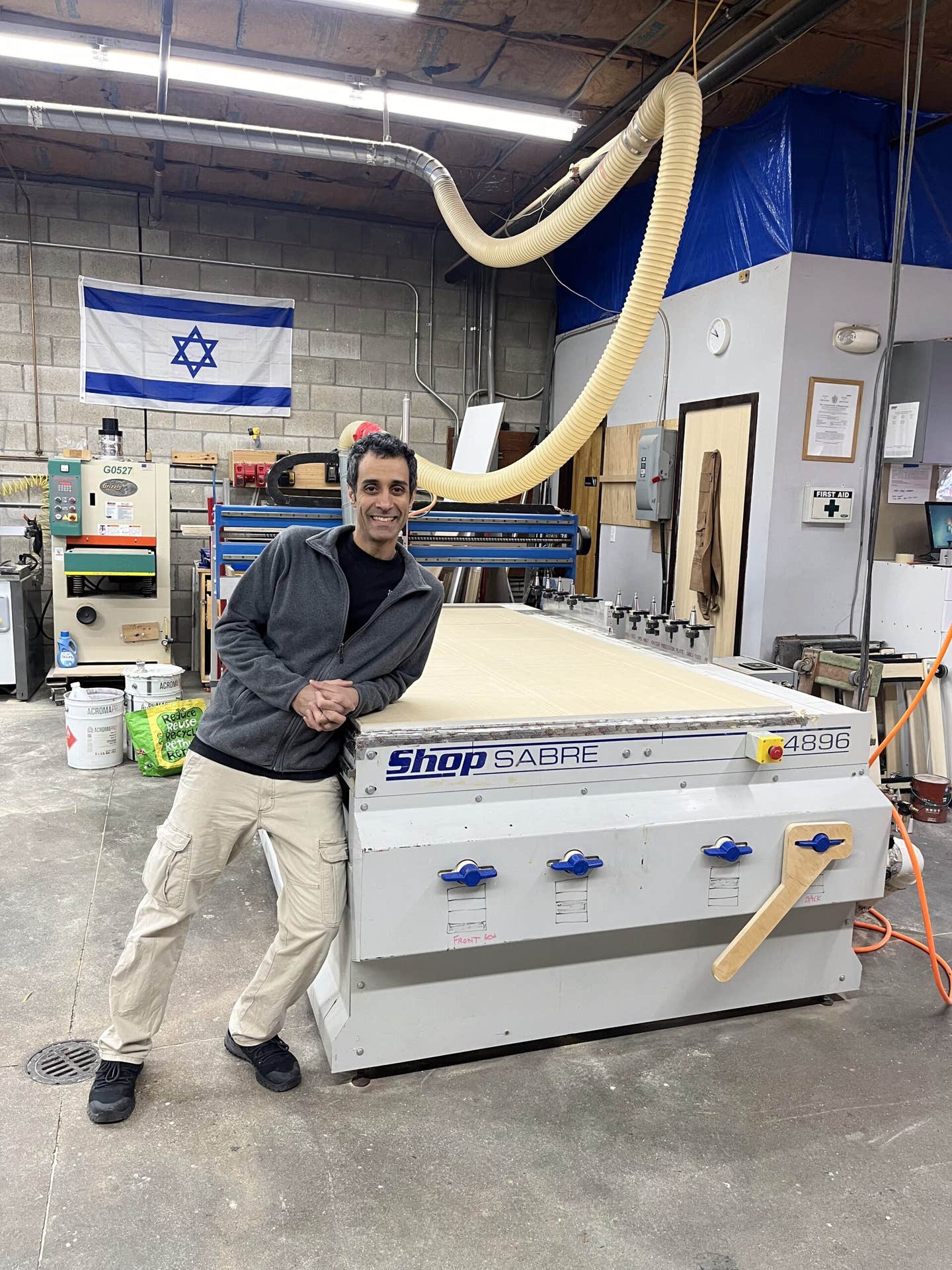Unplugged and in tune
Almost every woodworker owns a plane or two, but most of us hardly ever use them. While some of the best craftsmen are adamant about their benefits, most people earning…
Almost every woodworker owns a plane or two, but most of us hardly ever use them. While some of the best craftsmen are adamant about their benefits, most people earning a living at woodworking look at hand tools as old-fashioned, slow, inefficient, somewhat romantic and, well, pretty darn useless. One is far more likely to see them in an art furniture woodshop than a custom cabinet shop.
Are we missing something? Is there a place for hand tools in the modern shop?
As a partner at Iron Mountain Woodshop in Rapid City, S.D., Ken Froelich spent many years building cabinets and also repairing furniture for servicemen. His days were often devoted to restoring pieces brought home from all over the world by the flyers at nearby Ellsworth Air Force Base. Now, semiretired, Froelich still builds cabinets in an incredibly efficient 300-sq.-ft. shop, where he also teaches woodworkers how to tune, sharpen and use hand tools.
“I like the quiet,” he says. “There’s nothing as soothing as the gentle swish of a well-tuned plane. But that’s not the reason that I advocate using hand tools. Time is money, and unplugged woodworking is often quicker, and therefore more cost-effective, than running machines.
“The key is setup time,” he continues. “For example, if I need to chamfer the edge of a cabinet door, I can do it in seconds with a sharp block plane. Or I can remove the router from the table, install a chamfering bit, set up the router table fence (or clamp a straight-edge to the work for a portable router), set the depth of cut, plug in the tool and finally make the cut.”
With a block plane, he can also make that cut with little fear of tear-out at each end, where the blade needs to slice across the end grain of the stiles. That’s because he can work a low-angle plane in from each end, so that the rail supports the fibers of the stile. With an electric router, the end of the cut needs to be backed up with clamped-on scrap wood or the bit will tear a sliver off the stile.
“Control is an issue, too,” Ken says. “I can take one pass or several. That means that I can determine the exact profile and depth of the chamfer without ever having to run a test cut on a piece of scrap or set the router’s depth of cut a couple of times, just to get it right.”
The man literally shuddered when it was suggested that the same chamfer could be done with a belt sander.
“Those things are not easily controlled,” he says. “They’re a good way to have a dip at each end of the door and a 60-degree chamfer instead of a 45-degree one in the middle.”
He might be a little biased, of course. A past president of the South Dakota Woodworkers’ Guild, Froelich hosts a meeting once a month in his shop for hand-tool aficionados. But he does make a solid case for hand tools in the modern shop.
There’s a problem
The biggest complaint that professional woodworkers have with hand tools is sharpening. Planes, chisels and scrapers need to have a keen edge to work well and achieving that takes time, patience and a little learning.
Sharpening is definitely something that shops need to take into account when considering whether to include hand tools in the work regimen. Plane and scraper blades, like chisels, need to be ground every now and then and honed frequently. The difference here, once again, is time. Grinding, whether on an electric machine or with a series of water or diamond stones, establishes the primary bevel and it can involve removing quite a bit of steel. Honing, on the other hand, usually means just touching up a secondary bevel and it only takes a minute or two.
Oil stones seem to be losing favor rapidly in the sharpening world. The new generation of diamond sharpeners (generally a thin screen of synthetic diamond powder on a flat nickel plate) might not be quite as fine as oil stones, but they are a whole lot faster and cleaner. Where diamonds leave off, somewhere around 1000 grit, water stones and ceramics have taken over. Most woodworkers will grind and hone with diamonds and then refine the bevel down to 4000- or 8000 grit on water stones. These, too, are faster than oil stones, but they do have one disadvantage. While oil stones are slow to wear and diamonds are almost impregnable, water stones wear quickly and can become dished or misshapen. When that happens, they need to be dressed (that is, flattened or, in the sharpening world, “lapped”).
Different types of tools
While planes have been with us since the Egyptian pharaohs (at least 3,000 years), they aren’t the only hand tools available to woodworkers. Most shops make more extensive use of card scrapers than they do hand planes. These simple steel plates can replace sandpaper, files and electric sanders in many situations. They cut quickly and cleanly and are ideal for a number of small jobs. Scrapers can be used to remove excess dried wood filler, smooth mill marks left by a thickness planer or jointer, take out swirls left by an orbital sander and blend surfaces such as the joint where a stile meets a rail. They come in various shapes such as French curves for working ogees and roundovers, circular shapes for cleaning up crown molding and the standard rectangles that are used on flat surfaces.
There’s a knack to using a card scraper but, once learned, most woodworkers prefer them to sandpaper. The sharpening process is relatively simple. On a rectangular scraper, the tool is locked in a vise and the edges are filed flat. An old screwdriver handle or a special round, hardened steel bar (called a burnisher) is then stroked along the edges, where it rolls a burr off each edge. It’s this thin, curled burr that actually does the cutting. To make it work, the scraper is bent in the middle by holding one’s thumbs against it to create a gentle arc along the cutting edge. Card scrapers actually plane the wood. That is, they create very small shavings, rather than fine dust.
Block planes
There are three types of hand planes that modern woodworkers might find useful: block planes, bench planes and profile planes. Of these, block planes are by far the most common in today’s shops. These small tools fit nicely in an apron or tool-belt pocket and they can be used in a hundred different ways throughout the day. Aside from the chamfer discussed earlier, they work magnificently for paring end grain. Some woodworkers even used them to sharpen their pencils. Block planes usually have the blade (iron) set at a shallow bed angle (usually 20 degrees or in the neighborhood of 12 degrees), which allows them to cut across end grain. When the iron is installed in the body, its bevel is up: that is, the ground and honed bevel faces the ceiling. On other planes, where the iron sits at about 45-55 degrees, the bevel is almost always facing down.
The key with block planes is to reveal as little as possible of the cutting edge below the bed, so that the plane can take very thin shavings. When set right, it can even take a couple of passes for the iron to cut down the high spots before it takes its first real shaving. This gentle cut makes it ideal for fine-tuning drawer fronts and inset doors, removing glue lines or even rounding over an edge in several passes.
One reason that new woodworkers often give up on planes is that they have too much of the cutter exposed. When a plane chatters, catches, digs in or fails to slide smoothly across the wood, that’s usually the reason. Even a somewhat dull iron will take a shaving, if it’s not set too deep. Remember that the tool sometimes needs to make a few passes before it cuts and keeping this in mind helps us resist the urge to expose more steel. Also, when increasing the depth of cut (that is, lowering the iron into the wood), it needs to be done in very, very small increments.
Bench planes
These larger planes are designed to dress boards: that is, they make boards flat and straight. Instead of walking across the shop and holding a wobbly wide board on edge against the low fence on a jointer, one could simply stay at the workbench and stroke the board’s edge once or twice with a long jointer plane (a No. 7 or 8). When the wide face of a board needs to be flattened and it is wider than the jointer bed, a sharp and well-tuned jack or smoothing plane (No. 5 or 4) will do the job in a minute or two. One doesn’t need to get it perfect. Usually one can just take enough off one corner so that the bottom face is flat enough to ride through the thickness planer. That only takes a few seconds. For most of us, the idea of spending a long time getting a board completely flat with a hand plane is simply not an option. But removing just enough waste so the electric planer can finish the job is definitely a time saver and a very practical way to deal with wide stock. Once the board is relatively flat on one face, the second face can be milled flat by the machine. Then it’s just a matter of flipping the board and letting the machine clean up the face that was hand-planed.
For boards that are a long way from flat, there is a small hand plane (called a scrub plane) that has a slightly round blade protruding through the bottom. This very aggressive tool will quickly reduce the high spots, taming warps and twists and leaving a board ready to be dressed by its gentler cousins, the smoothing planes. While the call for a scrub plane is infrequent in these days of relatively flat hit-and-miss hardwoods, it’s a dandy tool to have around in an emergency.
Profile planes
These include everything but bench and block planes. The most common of them are simple rabbet (rebate) planes, whose function is to create a rabbet (a groove missing one of its sidewalls) on the edge of a board. For long boards or lots of parts, a router table is probably a better choice, but if one only has a couple of short boards to rabbet, these planes will have the job done in less time than it takes to install and set the router bit.
Other profile planes include a huge family of plough (plow) planes that are designed to ride along a clamped-on straight edge or use their own built-in guides to follow the edge of a board. They cut profiles on the face or edge of a board — everything from standard straight grooves and dadoes to dovetailed grooves, beads and even crown moldings. While shapers and routers are definitely more efficient here, a collection of plow planes is a wonderful asset when trying to match historic moldings, door panels and other architectural elements. Many of them can have the iron custom-made at a fraction of the cost of a set of molder knives and, if it’s a one-time job and small enough, hand planes might just be the smart choice.
The bottom line
The final word on why we don’t see more hand tools in modern shops, but probably should, comes from veteran woodworker Mark Koons. He spent time in Japan during his years in the service and he was fascinated by traditional woodworking there.
“I think the resistance to hand tool use by professional woodworkers,” he says, “is because of sharpening. At least that was my own experience. Edge tools, whether hand-held or machine-powered, must be sharp to work well. A sharp hand tool will certainly outperform a dull power tool. If I had the chance to direct a beginner’s education, we’d begin with sharpening and using hand tools. The insights gained are 100 percent transferable to efficient machine work.”
John English is the author of How to Choose and Use Bench Planes and Scrapers (Linden, 2010) and Woodworker’s Guide to Sharpening (Fox Chapel, 2008).
This article originally appeared in the April 2012 issue.



